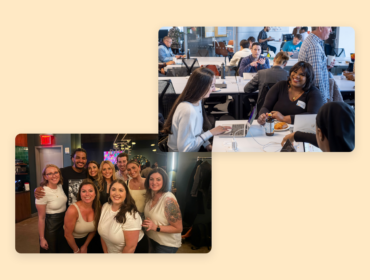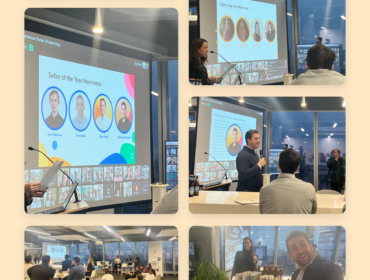Creating a vibrant performance process
Workplace culture is one of the most difficult things to define, develop, and maintain — especially since the pandemic has shaken up people’s lives and working arrangements.
According to a 2021 study from The Society for Human Resource Management, 62% of HR professionals say it’s been difficult to maintain workplace culture during the pandemic and 53% of U.S. workers who’ve left a job due to workplace culture did so because of their relationship with their manager.
This is where managers have a big opportunity to step in, creating performance processes that boost morale and help people bring their best selves to work each day.
But, of course, that’s easier said than done.
“Humans are messy,” said Ben Eubanks, chief research officer at Lighthouse Research & Advisory, in a recent episode of his podcast, We’re Only Human. “One of the big things we have to do is change behaviors, get people to see things differently. And if you made a list of the things that are very hard to do in life, that’s at the top.”
So, how can HR leaders break through these barriers and create a genuine culture of performance within their organizations?
Eubanks sat down with two chief people officers — Abby Hamilton of LiveIntent and Shane Metcalf of performance management platform 15Five — to find out.
Use technology to facilitate better conversations
Leaders can use tech platforms like 15Five to build regular conversations into their workflows and create better feedback loops.
“In general, humans are bad at consistency around these things, so technology can play a really cool role in automating and ensuring these feedback loops are actually happening,” said Metcalf.
15Five, for example, prompts managers to ask team members how they’re doing, which challenges they’re facing, and what’s going well — and then document those findings for further introspection.
“Those feedback loops can then improve the quality of the biannual performance review, where you already have a pretty rich data set that you can draw from,” Metcalf added. “Then it’s easier to zoom out to the bigger picture of, ‘Okay, where does this person want to go? What does their career development look like? What are the blockers that I think they need to overcome in order to go to that next level of leadership competence?'”
Make check-ins more meaningful and less transactional
Once managers institutionalize those check-ins and performance reviews, they also have to make sure they’re digging in deep to have meaningful conversations — even if it’s a bit uncomfortable at first.
“One-on-ones can easily become checklists and to-do lists, so you have to be very intentional as a leader about how you’re using that one-on-one time,” said Hamilton. “Are you actually pausing to give the person on the other side a moment and give them their voice and their time to shine? Because they’re going to follow our lead.”
As Eubanks put it, managers should take the conversation beyond “What have you done for me lately?” and really focus on “What can I enable you to be tomorrow?'”
Help managers become coaches, not taskmasters
Managers have to drive business results and hit KPIs, yes. But they also can’t forget about the other important part of their role: to be a coach, mentor, and leader to their team members.
“We need to change hearts and minds; we need to help managers understand there is a bigger and more meaningful role they get to play,” Metcalf said. “It’s [about] looking at, what energizes you and de-energizes you? What are your strengths? How can we cultivate those strengths into your superpowers? And how can we use those superpowers to master the problems of the business that we’re facing?”
Managers should also understand that encouraging people to bring their best selves to work doesn’t always mean that they’ll be cheery.
“Best self isn’t just happy self, best self is authentic self,” Metcalf said. “It’s actually somebody that’s in touch with themselves and is listening to themselves […] We have to recognize that authenticity can be a source of power and success.”
Commit to an ever-changing, ongoing process
Performance processes and company culture are always evolving — so they should be reviewed and updated regularly, such as twice a year.
“Every six months, the company may be in a slightly different position,” Hamilton said. “So, how do we meet people where they are and the company where it is to bring out the best and the truth at that moment?”
Most importantly, workplace leaders have to make a long-term, ongoing commitment to reviewing these processes, cultivating meaningful conversations, and connecting with their fellow humans — even in a professional setting.
As Hamilton put it, “It’s not that complicated. We all want to be seen, heard, and recognized.”



